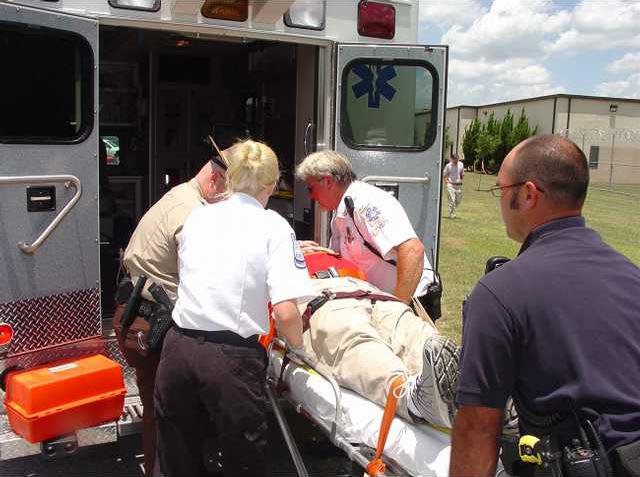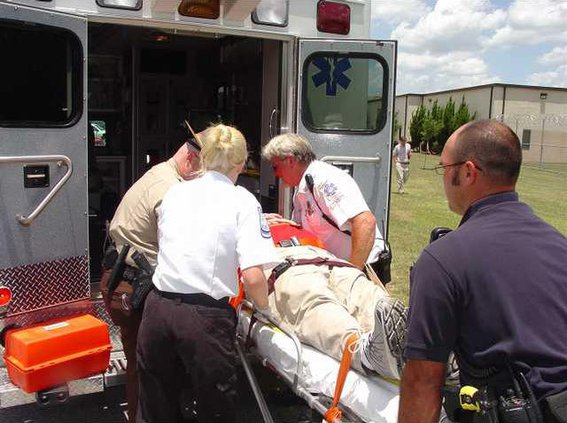Effingham Hospital’s System Leadership Team in coordination with Effingham Emergency Management and various emergency services conducted a mass casualty simulation disaster drill June 27. The Effingham EMS, Springfield Police Department and Effingham County Sheriff’s Department participated in the simulation.
As a part of the emergency management plan, every Georgia hospital is required to have a structure in place to respond to emergencies. This structure is routinely tested during drills. Accredited health care organizations that provide emergency services or are designated as a disaster receiving stations need at least one external drill per year that includes an influx from outside the organization of volunteer or simulated patients.
The Effingham Hospital disaster drill first opened with simulated situations including both natural and manmade disasters. The simulation opened with a tornado watch for Effingham County at 12:30 p.m., a tornado warning at 12:55 p.m., and by 12:58 the entire hospital facility was poised to code triage and ED standby.
Once the drill was in motion, several EMS ambulances were dispatched to the scene of the mock disaster where medical and law enforcement personnel faced the immediate challenges of assessing the injuries and prioritizing treatment. Effingham Hospital employees served in the role of patients with simulated injuries at the scene of the accident located in front of the Effingham Sheriff’s Department off Highway 21 near Springfield.
After an assessment by EMS rescue personnel it was determined that 11 were injured to varying degrees and one patient deceased. After checking vital signs, starting artificial breathing and stabilizing the patients, rescue personnel were then required to decide if and how their patients needed to be transported for further medical care. The most critically injured patients were taken by ambulance and transport to Effingham Hospital for immediate emergency treatment.
The lifesaving team was required to radio the hospital with each patients’ vital statistics and condition before arrival. EMS arrived at 1:22 p.m. Once at the hospital, the lifesaving team had to transfer their patients into the care of Dr. Ross McCabe and his Effingham Hospital emergency team and explain what they found and what treatment was given.
During the final stage of the disaster drill, two patients were treated following a simulated chemical spill accident requiring hazardous material decontamination of the two patients. At 1:38 p.m. the main facility’s electricity and communications were severed by disaster team officials to simulate even more difficult working conditions.
Specially equipped staff in state of the art decontamination suits conducted the mock chemical spill victims through a special decontamination tent, spraying them down with fresh water and state of the art cleansing agents. They were then sent to the emergency room to receive treatment.
Again the lifesaving efforts mobilized in response to a mock disaster drill in order to ensure the facility’s emergent readiness. With the conclusion of the disaster drill, all emergency personnel were wholeheartedly congratulated by James Edwards, director of quality and patient safety, and Joshua Forbes, safety officer, on their medical success and concentrated team effort.
“This kind of drill helps sharpen our lifesaving skills and in the event of a true disaster, it will make sure we’re prepared in terms of safety at Effingham Hospital,” Edwards said.
In all, nearly 80 emergency personnel were involved. The “all clear” was sounded at 2:30 p.m. throughout the hospital’s main medical campus at Springfield.





